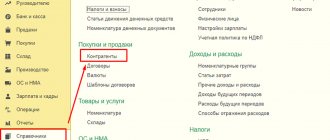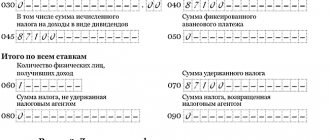Characteristics of account 75
According to the Chart of Accounts, account 75 summarizes data on all types of settlement transactions with the founders (participants) of the enterprise (shareholders of a joint stock company, participants in a general partnership, members of a cooperative, etc.):
- on funds invested in the authorized (share) capital of the company;
- on payment of income (dividends);
- for issuing borrowed funds to company participants;
- to increase or decrease the size of the authorized capital;
- on the procedure for repurchasing shares from shareholders, their further sale or redistribution between other shareholders, etc.
In order to provide a detailed reflection of the actions performed, analytical accounting for accounting account 75 is maintained for each member of the company separately. The exception is the owners of unregistered bearer shares in a joint stock company.
Account 75 is also used by unitary enterprises to account for settlement transactions carried out with authorized institutions and local government structures.
You can find more complete information on the topic in ConsultantPlus. Free trial access to the system for 2 days.
If accounting is carried out within a group of companies between which there is a relationship, all actions are reflected separately, and as a result a consolidated report is compiled.
Account “Settlements with founders” – accounting of deposits
At the time of state registration of the company, a standard entry is generated for the amount of the authorized/share capital. The same entries are made with a further increase in the amount of capital.
At the same time, the credit balance of the account. 80 is equal to the amount of the authorized capital reflected in the constituent documentation.
Primary documents are decisions, constituent/payment documents, acceptance certificates, cash orders, appraisers’ opinions, etc.
The authorized capital of the enterprise has been formed and the debt of its founders is reflected on the date of state registration: D 75.1 K 80 The capital structure is shown using property accounts, the choice of which depends on the method of repayment. These can be inventory or cash accounts.
Accounting of calculations (postings)
After the LLC registration procedure has been completed, in addition to conducting business activities, there is a need to maintain accounting records for the company.
Authorized capital is the amount of funds that the founders are willing to contribute at the very beginning of the company's development.
In the future, these funds will be used for the activities of the enterprise. Read more about accounting for authorized capital here, and this article discusses in detail the process of changing the authorized capital (increase and decrease). These funds represent a liability of the enterprise, and will be a source of formation of assets.
The assets and liabilities of the enterprise were discussed in detail in this article. To find out on which account the authorized capital is calculated, you need to select it from the Chart of Accounts. There is an account. 80 “Authorized capital”.
Its purpose is to take this capital into account.
Since the authorized capital is a liability, this means that the account is also 80 is also passive. An increase in a liability is reflected in a credit, and a decrease in a debit. The Chart of Accounts also contains an account.
75 “Settlements with founders.” This account is needed to carry out all settlements with the founders, that is, payment of dividends, contributions to the authorized capital, etc.
Accounting 75: active or passive?
To correctly reflect the data, you need to know whether the account is active or passive 75 . The answer to this question depends on the type of debt that is reflected in this account. For example, the debt of the founders for contributions to the authorized capital is displayed as a debit to account 75, and the debt of the enterprise for the payment of dividends is shown as a credit. Debt can be reflected both as a debit and as a credit, respectively, account 75 is active-passive.
Thus, in the balance sheet, the first case will be reflected as a debit balance in the asset line on line 1230 “Accounts receivable”, and the second - as a credit balance of account 75 in the liability line on line 1520 “Accounts payable” or on line 1450 “Other liabilities”, if the debt is long-term (according to the order of the Ministry of Finance dated July 2, 2010 No. 66n).
general description
Account 51 “Current Account” in the chart of accounts reflects “ information” about the balances and movements of non-cash funds located in all “current accounts” of the organization.
If we need to find out all the information about how much non-cash funds we have at our disposal, from what sources the funds came from and for what purposes the funds were spent, then we can safely study account 51 using basic reports in the 1C 8.3 program (turnover balance sheet, account analysis, account card).
Corresponding accounts by debit (Debit 51 - Credit 50, 51, 57, 58, 60, 62, 66, 67, 69, 70, 75, 76)
Corresponding accounts for the loan (Debit 50 , 51, 57, 60 , 62, 68.02 , 75, 76 - Credit 51)
Subaccounts of account 75
The chart of accounts recommends opening two subaccounts to account 75:
Subscribe to our newsletter
Yandex.Zen VKontakte Telegram
- 1 “Accounting for settlements on deposits” - information about participants’ contributions to the fixed capital of the enterprise is taken into account here. Its debit reflects the amount of contribution to the authorized capital, which is determined in the constituent documents. For joint-stock companies, the subaccount is debited for the amount of debt of the founders for payment for shares. Accounting entries are made in correspondence from account 80. As the organization begins to receive financial resources from participants, account 75 is credited in correspondence with the cash (cash or non-cash) or inventory accounts (if a contribution is made in the form of property). It should be borne in mind: if the real value of shares for sale is greater than the nominal value, the difference in prices is displayed in Kt 83.
- 2 “Accounting for settlements with founders for the payment of income” - refers to active-passive accounting accounts. The credit of this subaccount reflects income accrued for payment in correspondence with account 84. The debit records information about the funds actually paid. When income represents the offset of claims (that is, it is presented in kind), such transactions are debited to the subaccount in correspondence with the accounting accounts. When the founders are employees of the company, income is accrued and paid through account 70. Sub-account 75.2 can also be used to distribute financial results when operating as a simple partnership.
Subaccounts
The following subaccounts can be opened for account 75 “Settlements with founders”:
- 75-1 “Calculations for contributions to the authorized (share) capital”;
- 75-2 “Calculations for payment of income”, etc.
Next, we will expand each subaccount and provide typical transactions with an account of 75.
Subaccount 75-1
Here they reflect settlements with the founders (participants) of the organization for contributions to its authorized (share) capital.
When creating a joint stock company according to Dt 75, in correspondence with account 80 “Authorized capital”, the debt for payment for shares is taken into account.
When the founders’ contributions in the form of cash are actually received, entries are made according to Kt 75 in correspondence with the cash accounts. And deposits in the form of material and other assets (except money) are recorded using entries according to Kt 75 in correspondence with the accounts:
- 08 “Investments in non-current assets”;
- 10 "Materials";
- 15 “Procurement and acquisition of material assets”, etc.
In a similar manner, they reflect settlements on contributions to the authorized (share) capital with the founders (participants) of organizations of other organizational and legal forms. In this case, an entry under Dt 75 Kt 80 is made for the entire amount of the authorized (share) capital declared in the constituent documents.
When an organization’s shares are sold at a price exceeding their par value, the resulting difference between the sale and par value is included in Kt 83 “Additional capital”.
Unitary enterprises use subaccount 75-1 to account for settlements with the state or local body for property transferred to the balance sheet under the right of economic management or operational management. It happens:
- when creating an enterprise;
- replenishment of its working capital;
- seizure of property.
These enterprises call this subaccount “Settlements for allocated property.” Accounting for it is made in the general manner.
Subaccount 75-2
This takes into account settlements with the founders (participants) for the payment of income to them. The accrual of income from participation in the organization is reflected in Dt 84 “Retained earnings (uncovered loss)” and Kt 75. At the same time, the accrual and payment of income to employees of the organization who are among its founders (participants) is taken into account in account 70 “Settlements with personnel for payment labor."
Payment of accrued income is reflected according to Dt 75 in correspondence with cash accounts.
When paying income from participation in an organization with its products (works, services), securities, etc., entries are made in accounting according to Dt 75 in correspondence with the accounts accounting for the sale of the relevant valuables.
Tax on income from participation in an organization, subject to withholding at the source of payment, is taken into account according to Dt 75 and Kt 68 “Calculations for taxes and fees”.
Subaccount 75-2 is also used to reflect calculations for the distribution of profit, loss and other results under a simple partnership agreement. The accounting records for these transactions are similar to the general procedure.
Basic postings to the account. 75
Below are typical entries for account 75 - Settlements with founders:
- Dt 75.01 Kt 80 - reflects the debt of participants to the enterprise for contributions to the authorized capital;
- Dt 75 Kt 83 - the difference between the real and nominal value of shares is taken into account;
- Dt 75.02 Kt 50 - payment of income in cash;
- Dt 75.02 Kt 51, 52, 55 - payment of income by bank transfer to a settlement, foreign currency or special bank account;
- Dt 75.02 Kt 62 - offset of mutual claims;
- Dt 75.02 Kt 68.01 - withholding tax on personal income;
- Dt 50 Kt 75.01 - actual contributions made by participants in cash;
- Dt 51, 52, 55 Kt 75.1 - contributions made by participants by bank transfer;
- Dt 41.10 Kt 75.01 - contributions made by participants in the form of inventory items;
- Dt 07, 08, 58 Kt 75.1 - contributions made by participants in the form of fixed assets, non-current assets, securities.
Below is the answer to the question regarding account 75 - on which line in the balance sheet it is reflected.
Net assets
The difference between the amount of assets and the amount of liabilities accepted for calculation is called net assets. If the value of this indicator for three reporting periods in a row is less than the authorized capital, the organization must reduce the first section of the liabilities side of the balance sheet. If the amount of net assets is less than the minimum allowable size of the capital, then the enterprise should be liquidated.
Net assets = A1 + A2 – P4 – P5
At the same time, the debt of shareholders on deposits (account 75) and the nominal value of shares is excluded from the second section of the asset. The amount of future income is subtracted from liabilities (account 98).
Which line in the balance sheet shows account 75?
Settlements with founders should also be reflected in the company's financial statements.
In the balance sheet, settlements with participants can be included in accounts receivable and payable, since accounting account 75 is active-passive.
The amount is entered in asset line 1230 “Accounts receivable” of the report form when the balance on account 75 is debit. If the company has a credit balance on this account, the accountant reflects this amount in liability line 1450 “Other liabilities” or 1520 “Accounts payable” on the balance sheet, depending on the duration of the obligation.
That is, in accounting, account 75 “Settlements with founders” in the balance sheet is displayed in an active or passive line, depending on the final balance of the account.
When drawing up a balance sheet, it is imperative to take into account the final balances of subaccounts. It is unacceptable to generalize information in this case, since the full picture of settlements with the founders of the enterprise is not displayed (clause 34 of PBU 4/99).
Analytical accounting
Analytical accounting within this line is carried out separately for each participant. An exception is the accounting of settlement transactions with shareholders in a joint-stock company.
If we talk about accounting for transactions with founders within a group of organizations that are interconnected, a consolidated reporting document is drawn up for activities; actions under number 75 are carried out in a separate manner.
***
Account 75 of accounting refers to active-passive and is intended to display all types of transactions for settlements with the founders of the enterprise. Its reflection in the balance sheet depends on the specific situation. If the balance of account 75 is debit, then the amount is reflected in asset line 1230, and if the balance is credit, in liability line 1450 or 1520, depending on the duration of the debt - long-term or short-term, respectively. Sub-accounts can be opened for the accounting account in question, which are used to reflect more detailed indicators. Postings to account 75 are made for all types of settlements relating to company participants.
Main sub-items and sub-accounts
The account in question contains several sub-accounts, for which certain accounting transactions are also carried out:
- 75-1. We are talking about settlement transactions for deposits in the fund. Here the accounting of settlement actions with the participants of the company on deposits is carried out. In the process of creating a joint-stock company, a debit in correspondence with line 80 takes into account the amount of debt associated with the payment of shares. If we are talking about the actual receipt of deposit amounts in the form of money, entries are made in correspondence with the accounts associated with the accounting of money. Thus, the count is often used in a system with a line of 10, 15, 08, 80, etc.
- 75-2. Here the calculation actions related to the payment of income are reflected. Records are kept of settlements with the founders of the company for the payment of interest payments to them. To fully reflect various operations, correspondence with lines 84, 70, 68 is used.
Both lines play an important role in the process of carrying out commercial activities and in terms of the development of the accounting department of the enterprise.
Sale of shares
The sale of securities (in our case, shares) is a completely familiar procedure that requires a special approach. Cash and other funds received as payment for these important documents can be accounted for through several methods and options:
- Together with the credit account, which is opened specifically for these purposes, or under account 76, which is referred to as “Settlements with various debtors and creditors.”
- In the form of targeted income from investors for the purchase of shares on the credit of account 86 (a special sub-account is used for this). The account itself is called “Targeted Financing”.
- As additional capital under Kt 83.
- According to the CT of the special subaccount for account 80.
- By credit of a new account, which is formed specifically for the implementation of these targets.
Shares that are at the disposal of the organization are subject to direct reflection within 81 accounts at the actual price. The exception in this case is securities placed at a value below par. Such items will be subject to write-off at the cost of placement.
Funds that were received as payment for shares, and are not subject to return to shareholders, are recorded as assets received free of charge and are included in the line “Other income”.
Arrears of payment for shares that have not been repaid within the established time period are subject to write-off from Kt 75 in full. In case of subsequent sale of shares to investors, they are written off from Kt 81 in correspondence with asset accounts.
The difference obtained between the selling price and the nominal value is to be recorded in 91 accounts.




